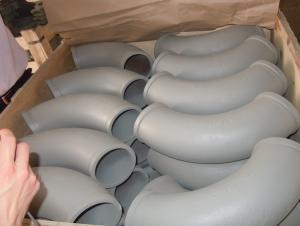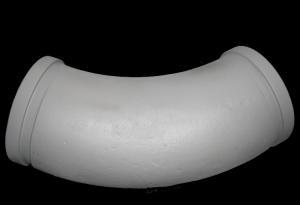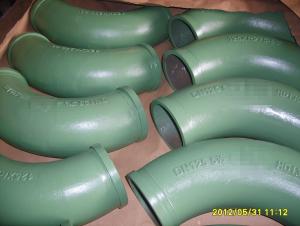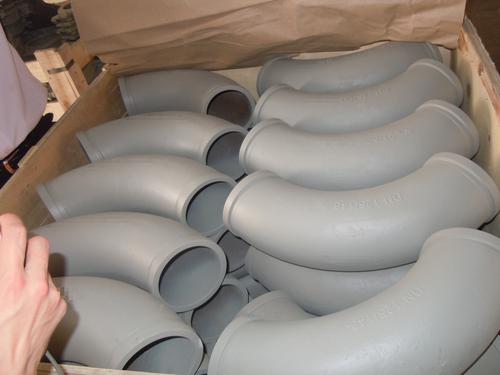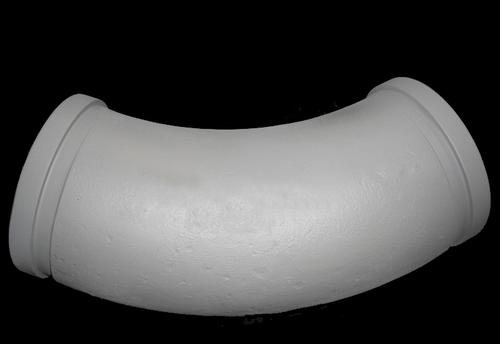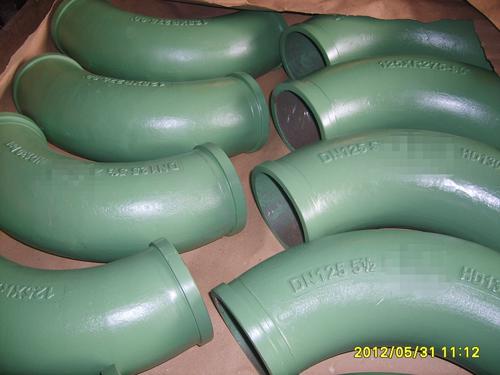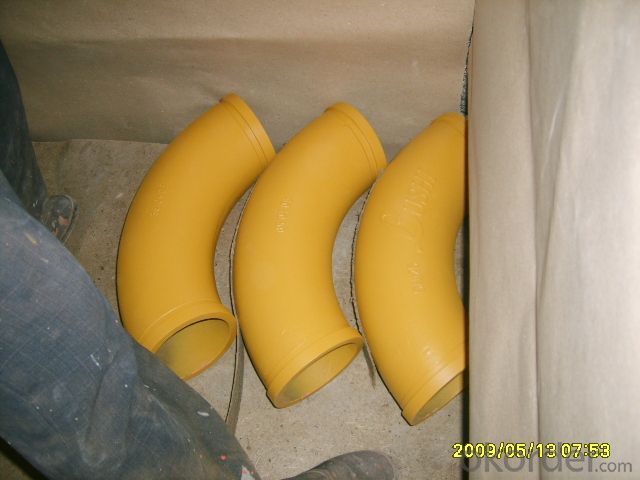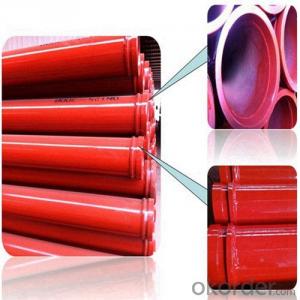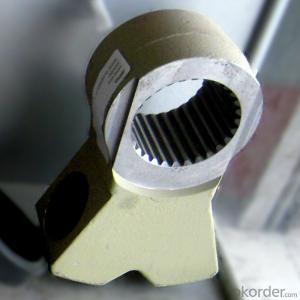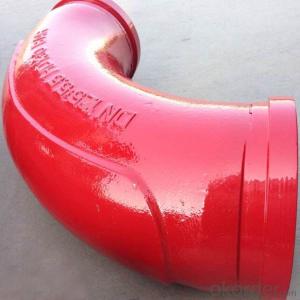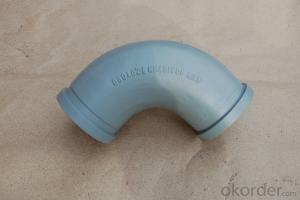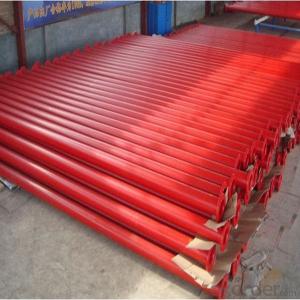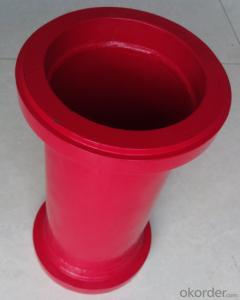Concrete Pump Truck Parts Elbow Bend R281 DN120 142Flange 90DGR Casting
- Loading Port:
- China Main Port
- Payment Terms:
- TT OR LC
- Min Order Qty:
- -
- Supply Capability:
- -
OKorder Service Pledge
OKorder Financial Service
You Might Also Like


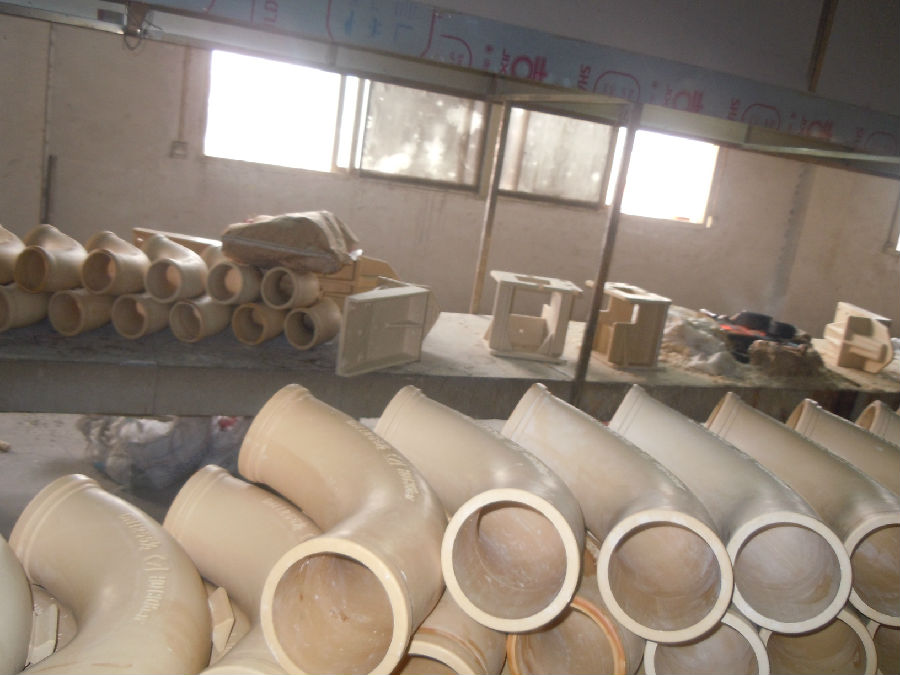
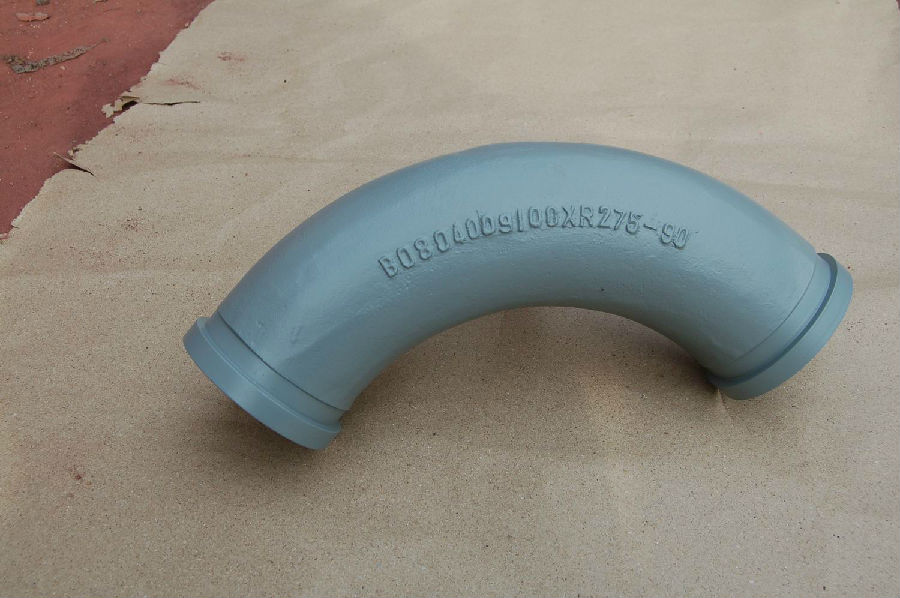
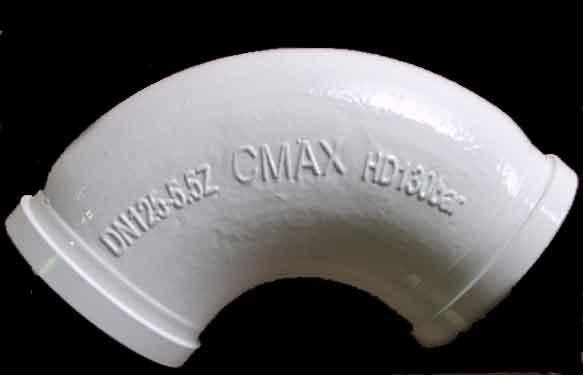
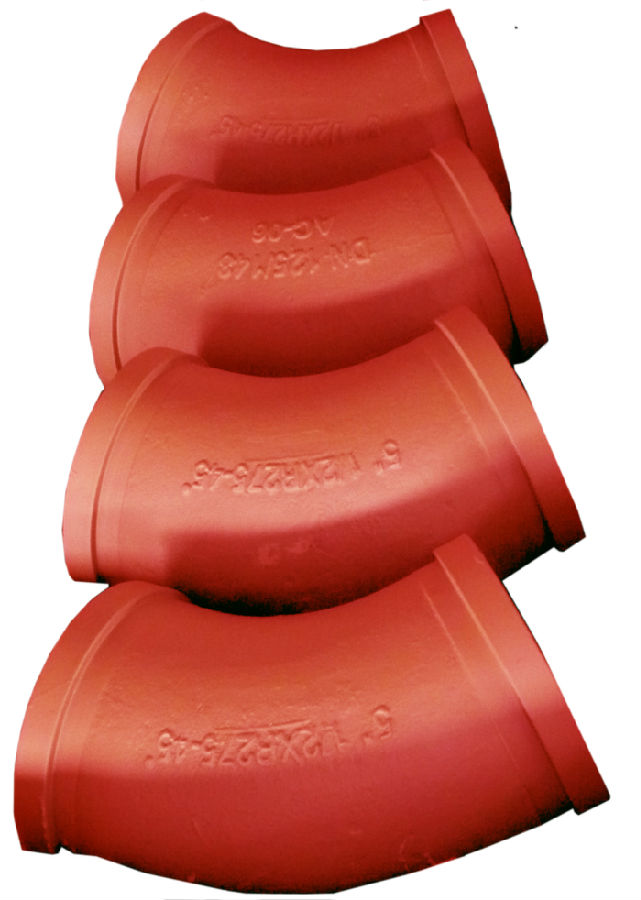
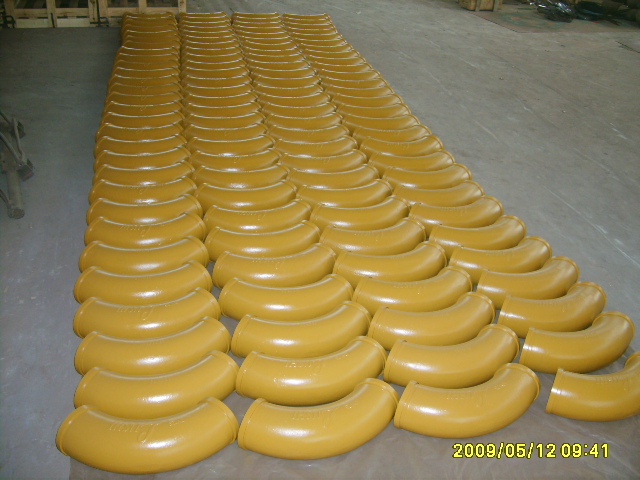
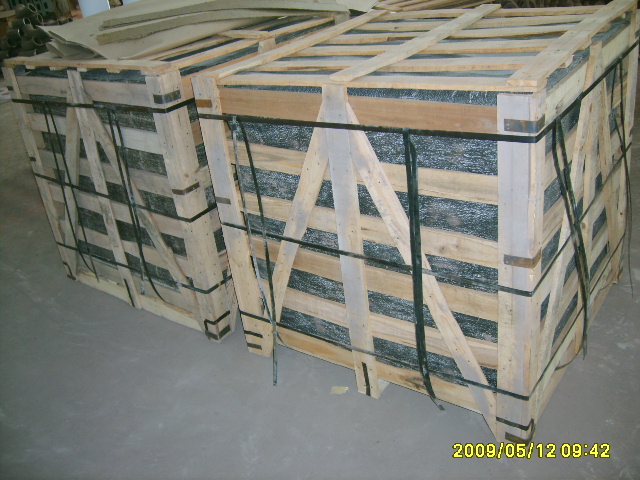
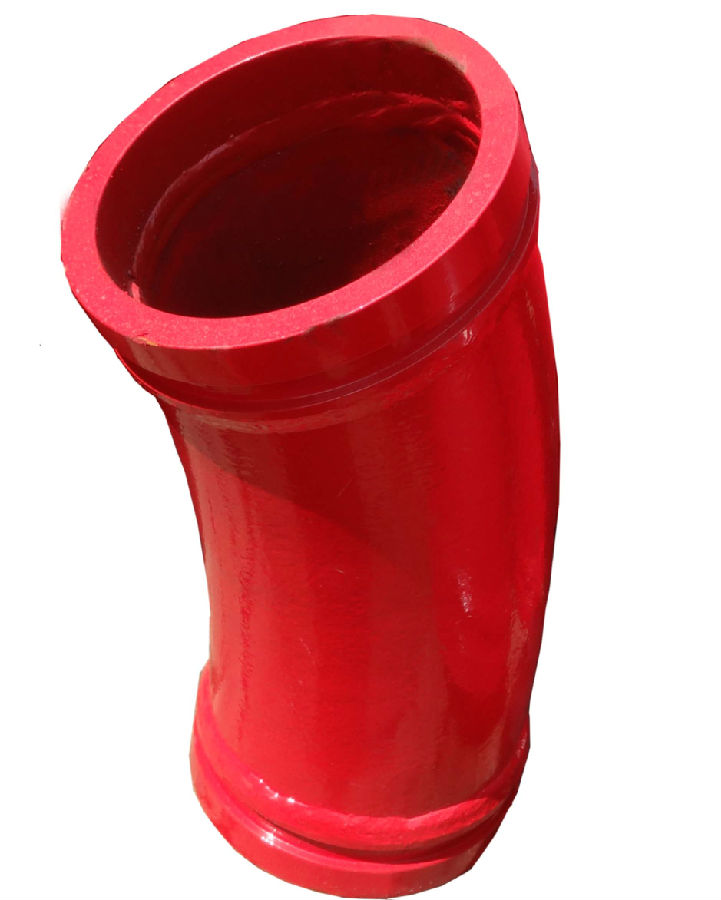
Product Description:
Product Name: Concrete Pump ELBOW DN120
1. Specification of Concrete Pump ELBOW DN120
Dimensions: DN120
Radius: 281mm
Flange: SK, ZX, F&M
Degree: 90
Material: #20 steel, ST52
Thickness: 4.5mm,6mm,7.1mm,7.5mm,10mm,
Working pressure: 180MPa
Notes: total series of concrete pump ELBOW for different brand concrete pump(PUTZMEISTER, SCHWING, CIFA, SANY, ZOOMLION, IHI, KYOKUTO Etc) available from us.
2. Application of Concrete Pump ELBOW DN120
Widely used on concrete pump truck, concrete placing boom, trailer concrete pump etc, for concrete delivery pipe connection.
Our concrete pump bends have been successfully exported to many countries from 1998, Our main markets as below: Middle East, Southeast Asia, America, Brazil, Italy, Russia, South Africa etc
Aiming at the largest concrete pump parts manufacturer, and reliable, professional supplier in China, we can supply concrete pump elbows, delivery pipes, casting or forging couplings, end rubber hoses, rubber pistons, tungsten wear plates, delivery cylinders, and other hydraulic parts, one stop service for your concrete pump parts and accessory business.
3. Package and Delivery of Concrete Pump ELBOW
Every 30pcs put in one seaworthy wooden box, and 20 boxes in one 20feet container.
- Q: What are the signs of a malfunctioning hydraulic oil cooler?
- There are various indications that may suggest a malfunctioning hydraulic oil cooler. 1. Overheating: The engine or hydraulic system experiencing overheating is one of the most common indications. If the hydraulic oil cooler is not functioning correctly, it may fail to adequately cool down the hydraulic fluid, resulting in elevated temperatures in the system. This can result in decreased performance, increased component wear and tear, and potential fluid breakdown. 2. Fluid Leaks: Another indication is the presence of hydraulic fluid leaks. Damaged or worn seals, gaskets, or hoses in a malfunctioning hydraulic oil cooler can cause these leaks. The leaks can be observable as fluid drips or puddles beneath the machinery or as oily residue on components. 3. Increased Noise: A malfunctioning hydraulic oil cooler can also cause heightened noise levels in the hydraulic system. This could be attributed to the introduction of air into the system, leading to cavitation or aeration. These abnormal noises can signal that the cooler is not functioning correctly and should be inspected or replaced. 4. Elevated Temperatures: Consistently higher-than-normal readings on the temperature gauge of your hydraulic system could indicate a malfunctioning oil cooler. The cooler may be unable to effectively dissipate heat from the hydraulic fluid, resulting in rising temperatures. This can lead to reduced efficiency, increased component wear, and potential system failures. 5. Reduced Performance: A malfunctioning hydraulic oil cooler can also result in reduced overall machinery or equipment performance. This can manifest as slower operation, decreased power output, or diminished hydraulic system response. If you observe a decrease in performance, it is advisable to inspect the oil cooler for any issues. Promptly addressing any of these indications is crucial. Continuing to operate machinery with a malfunctioning hydraulic oil cooler can cause further damage, increased downtime, and potentially expensive repairs. It is recommended to consult with a qualified technician or hydraulic specialist to diagnose and resolve any problems with the oil cooler.
- Q: What is the function of a concrete pump hydraulic filter?
- The function of a concrete pump hydraulic filter is to remove contaminants and impurities from the hydraulic fluid, ensuring that clean and filtered fluid is delivered to the hydraulic system. This helps to prevent damage to hydraulic components, maintain system efficiency, and prolong the lifespan of the pump.
- Q: What are the different types of concrete pump pistons?
- The different types of concrete pump pistons include single acting pistons, double acting pistons, and long-life pistons. Single acting pistons are commonly used in smaller concrete pumps and work by pushing the concrete through the cylinder with one stroke. Double acting pistons are used in larger pumps and work by pushing the concrete in both directions, increasing efficiency and output. Long-life pistons are designed with special materials and coatings to extend their lifespan and withstand heavy use.
- Q: Can concrete pump spare parts be replaced individually, or should they be replaced as a set?
- Concrete pump spare parts can typically be replaced individually, without the need to replace the entire set. This is beneficial as it allows for cost-effective maintenance and repair of the concrete pump. By replacing only the specific part that is faulty or worn out, operators can ensure that the pump continues to function optimally without incurring unnecessary expenses. Additionally, replacing parts individually allows for better flexibility and customization, as different components may wear out at different rates depending on their usage. However, it is important to note that some manufacturers may recommend replacing certain parts as a set or in specific combinations for optimal performance. Therefore, it is always advisable to consult the manufacturer's guidelines or seek professional advice when replacing concrete pump spare parts.
- Q: What is the purpose of a concrete pump remote control battery?
- The primary function of a battery for a concrete pump remote control is to supply power and mobility to the remote control device that operates the concrete pump. By using the remote control, the operator can conveniently control the movements and functions of the concrete pump from a distance, eliminating the need to physically be at the pump location. The battery provides the required electrical energy to the remote control, enabling it to transmit wireless signals and commands to the concrete pump. This grants the operator the freedom to move around the construction site while still maintaining complete control over the concrete pump. Additionally, the battery ensures uninterrupted operation of the remote control, guaranteeing efficient and precise control over the concrete pump's functions.
- Q: How often should hopper grate springs be inspected or replaced in a concrete pump?
- To ensure optimal performance and prevent potential issues, it is essential to regularly inspect the hopper grate springs in a concrete pump. The frequency of inspection or replacement depends on factors such as pump usage, operating conditions, and manufacturer recommendations. However, a general rule is to inspect the springs at least every six months or after every 500 hours of operation, whichever comes first. During the inspection, thoroughly examine the springs for any signs of wear, damage, or deformation. Check for cracks, excessive rust, or loss of tension. If any of these issues are found, immediate replacement is necessary to maintain proper functioning of the hopper grate system. Regular inspection and timely replacement of hopper grate springs are vital to prevent clogging or blockage in the hopper, which can lead to pump malfunctions or downtime. It is advisable to consult the concrete pump manufacturer's guidelines or seek assistance from a professional technician to determine specific inspection and replacement intervals based on the pump's make and model.
- Q: What are the signs of a faulty concrete pump control box?
- Some signs of a faulty concrete pump control box may include malfunctioning buttons or switches, erratic or inconsistent pump operation, failure to start or stop the pump, and abnormal or unusual sounds coming from the control box. Additionally, if there are any visible signs of damage, such as loose wires or burnt components, it could indicate a problem with the control box.
- Q: What are the common challenges in sourcing spare parts for stationary concrete pumps?
- Sourcing spare parts for stationary concrete pumps can pose several common challenges. Firstly, one of the major challenges is availability. Depending on the brand and model of the concrete pump, finding the exact spare parts needed may be difficult. Some manufacturers may not have a wide distribution network, which can make it challenging to locate the required spare parts in a timely manner. This issue can be exacerbated if the concrete pump is an older model or if the manufacturer has discontinued production. Secondly, cost is another significant challenge. Spare parts for stationary concrete pumps can be expensive, especially if they are sourced directly from the manufacturer. In addition to the initial cost, there may be additional expenses such as shipping, customs duties, and taxes, further increasing the overall cost of sourcing spare parts. Thirdly, quality assurance is crucial when sourcing spare parts. It is essential to ensure that the spare parts being sourced are of high quality and compatible with the specific make and model of the concrete pump. Poor-quality spare parts can lead to performance issues, breakdowns, and potentially safety hazards, which can be detrimental to the overall efficiency and longevity of the concrete pump. Furthermore, timing plays a vital role in sourcing spare parts. When a concrete pump breaks down, it can result in delays in construction projects, leading to additional costs and potential penalties. Therefore, finding spare parts quickly and efficiently is crucial to minimize downtime and ensure smooth operations. Lastly, language and communication barriers can also present challenges. If the manufacturer or supplier of the spare parts is located in a different country or speaks a different language, effective communication can be challenging. This can lead to misunderstandings, delays, and difficulties in accurately conveying the specific spare parts requirements. To overcome these challenges, it is advisable to work with reputable suppliers who specialize in concrete pump spare parts. These suppliers often have a wide range of spare parts in stock, ensuring availability and reducing the risk of delays. Additionally, establishing strong relationships with local distributors or authorized service centers can provide access to spare parts and technical support more efficiently. Regular maintenance and proactive planning can also help mitigate the challenges of sourcing spare parts for stationary concrete pumps. Keeping an inventory of essential spare parts and components can minimize downtime and ensure smooth operations.
- Q: How does the concrete pump work?
- Pump in place should be flat and solid, without obstacles around, no overhead transmission line. The pump shall not be parked on the slope.
- Q: What are the advantages of using stainless steel components in concrete pump spare parts?
- There are several advantages of using stainless steel components in concrete pump spare parts. Firstly, stainless steel has excellent corrosion resistance, which ensures the longevity and durability of the spare parts even in harsh environments. Secondly, stainless steel is known for its high strength-to-weight ratio, providing increased strength and reliability without adding excessive weight to the concrete pump. Additionally, stainless steel is highly resistant to wear and tear, which reduces the need for frequent replacements and maintenance. Lastly, stainless steel components offer a hygienic and clean surface, making them suitable for applications in the construction industry where cleanliness is crucial.
Send your message to us
Concrete Pump Truck Parts Elbow Bend R281 DN120 142Flange 90DGR Casting
- Loading Port:
- China Main Port
- Payment Terms:
- TT OR LC
- Min Order Qty:
- -
- Supply Capability:
- -
OKorder Service Pledge
OKorder Financial Service
Similar products
Hot products
Hot Searches
Related keywords
